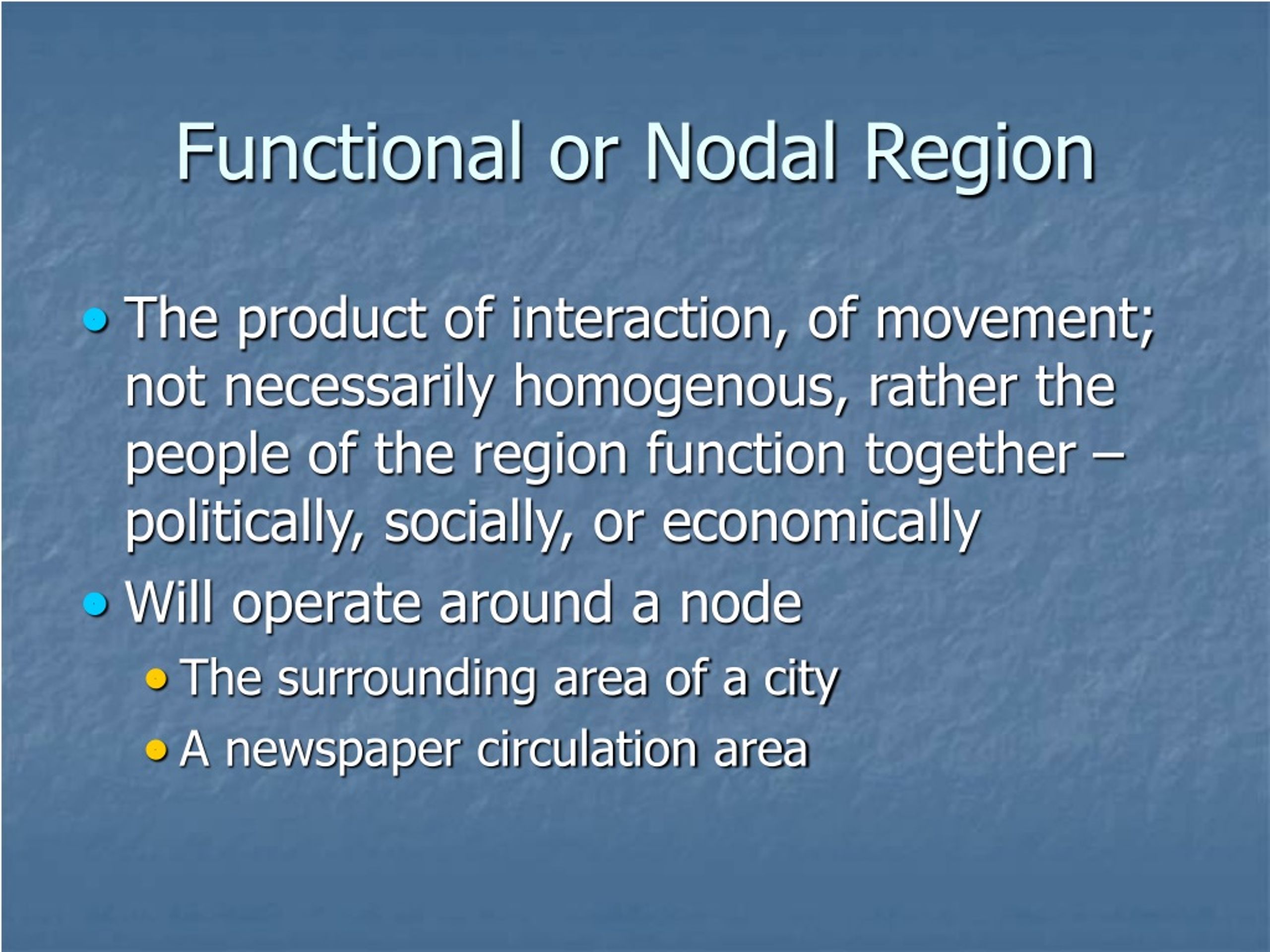Functional regions are significant tools for human geographers like myself to analyze human interactions with their surrounding environments. By studying functional regions, we can better understand how people, goods, and information flow within and between different regions. The most obvious example of a functional region is a city itself. So, people from rural areas move into the cities in a process often called internal migrationin order to get those good jobs. As a result, cities usually grow rapidly and.
These interactions are typically related to economic, social, or political activities. Discover the concept of a functional region, its key characteristics, and how it shapes economic, social, and cultural interactions. Learn how functional regions drive development, foster connectivity, and influence urban planning, making them essential for understanding modern geographic. Functional regions can stimulate economic growth, improve quality of life, and promote environmental sustainability, but they also face challenges such as urban sprawl, social inequality, and environmental degradation. Discover 9 functional region examples that illuminate geographic understanding, showcasing how economic, cultural, and political factors shape distinct areas. Explore lsi keywords like spatial organization, regional planning, and territorial dynamics to deepen your insights into these interconnected zones, enhancing your grasp of global geography and local interactions. Uncover the mysteries of functional regions with this ultimate guide. Delve into the intricate world of these geographical areas, exploring their unique characteristics and significance. Discover how functional regions shape our understanding of geography and learn to identify and analyze them effectively.
Don't Miss This: The Secret About JustPeacchyyys Shocking Secret Revealed
Ree Marie OnlyFans Scandal: The Secret Details You Won't Find Anywhere Else
Drugtestcheck.com: The Future Of Drug Testing Is Here
